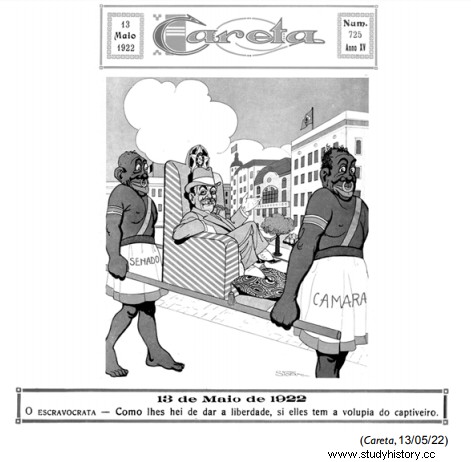Question 02 - UVA/2003.2 . During the presidency of Artur Bernardes, in the Old Republic, (1922-1926) we can identify:A. Political instability, with a "state of siege" being decreed and the outbreak of the Civil War in Rio Grande do Sul, between republicans and federalists and in São Paulo , a lieutenant uprising. B. Economic austerity, due to the financial support given to the Brazilian northeast. C. Industrial development and loans to indebted states. D. Ideological liberalism and political-social reforms, aimed at winning the support of urban layers.
Question 03 - UEL - The analysis of the government of Artur Bernardes (1922-26) shows. a) Complete stoppage of military movements in São Paulo and Rio Grande do Sul. b) Total identification of Luís Carlos Prestes with government ideas. c) Intense political activity of tenentismo against the dominant oligarchies. d) Growing decrease in the involvement of the proletariat in social problems. e) Great effort by the government to eliminate the oligarchic structure of the Republic.
Question 04 - UERJ 2001

Artur Bernardes – pictured above – occupied the presidency of the Republic between 1922 and 1926. Point out a characteristic of the Artur Bernardes government that may be related to the cartoon.
Question 05 - UNIFAL-MG - With regard to the government of Arthur Bernardes in the Presidency of the Republic (1922-1926), mark the alternative that does NOT correspond to one of the main events that occurred in national politics:a) The Contestado War. b) The Tenentista Movement. c) Maintenance of a permanent State of Siege. d) The Prestes Column.
Question 06 - FCC - 2010 - Civil House-SP - In 1924, the so-called 5th of July exploded in São Paulo. (...) The presence of the lieutenants in the capital of São Paulo lasted until the 27th. (...) After all, the rebels left the city on the 27th of July, moving through the interior of São Paulo towards Bauru. The maneuver was facilitated by the outbreak of tenentist revolts in cities in the interior. This was the so-called “Paulista column”, which settled in western Paraná, in a village near the mouth of the Iguaçu. There, troops from São Paulo faced the loyalists, waiting for another column from Rio Grande do Sul.
(Boris Fausto. História do Brasil. São Paulo:Edusp, 1955, p. 308-309)The The movement referred to in the text had the objective of (A) adding the leadership of the Armed Forces to the movement.
(B) overthrowing the government of President Artur Bernardes.
(C) saving the nation from communist groups organized into a Party.
(D) touring Brazil to show the economic strength of the lieutenants.
(E) protesting against the Army's repression of the Military Club.
FEEDBACK
01 - E
02 - A
03 - C
04 - Answer: One of the characteristics:· authoritarian character of the president · submission of the Chamber and Senate to presidential authoritarianism
05 - A
06 - B
